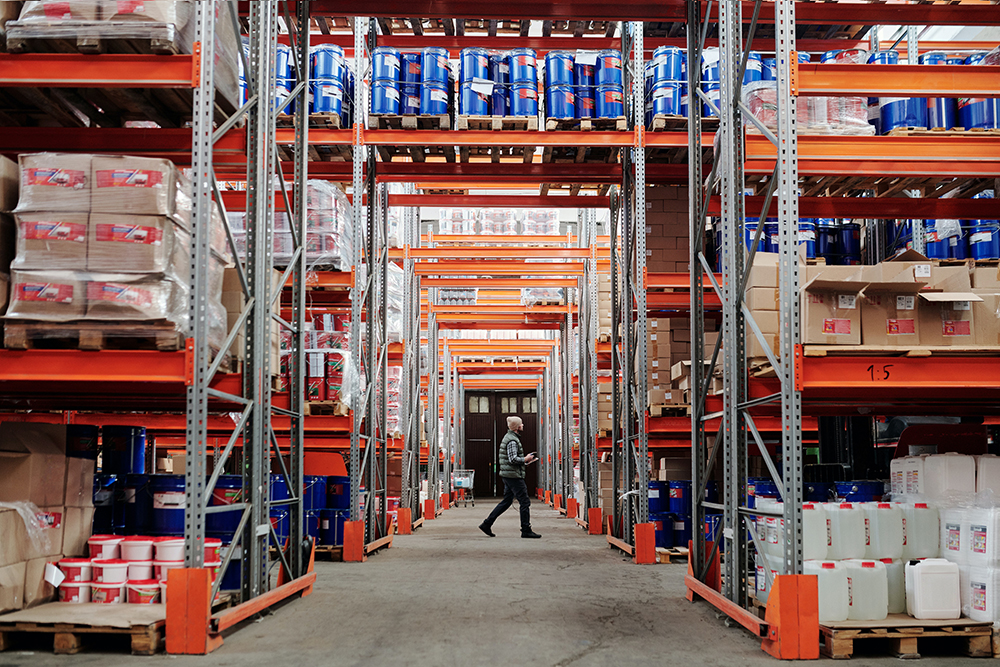
Upscaling Your Warehouse’s Organizational Processes with AI
If the ongoing supply chain crisis has taught us anything, it’s the critical importance of optimizing warehousing processes. However, managing a warehouse effectively is no mean feat. You’re required to be both strategist and analyst, to identify and capitalize on opportunities for improvement today while outlining and preparing for the needs of tomorrow.
The good news, though, is that managers aren’t alone when it comes to optimizing their warehouse operations. In fact, a host of technologies is emerging to make your warehouse processes more efficient and effective than ever before. This article describes strategies you can use to upscale your warehouse organizational processes through the integration of artificial intelligence (AI) systems.
The Power of Predictive Analytics
If you’ve been working in the industry for a while, you know that the market is always changing, and that means that your warehouse operations strategies must change with it. Fortunately, warehouse managers today have more powerful tools than ever before to analyze market conditions and forecast future trends.
For instance, the predictive capabilities of AI technologies are virtually unprecedented. These systems are capable of analyzing literally billions of data points in mere seconds and, through the power of machine learning, using that data to identify patterns and formulate market predictions.
These insights can be a profound asset when it comes to inventory management and distribution planning.
Remote Sensing
AI technologies aren’t just useful for analyzing data and predicting future market conditions, they’re also superb in monitoring existing conditions and defining optimization strategies as needed. This supports the kind of agility and responsiveness that are essential to avoiding the supply chain disruptions that have threatened the global economy in recent years.
For instance, AI-powered devices connected to the Internet of Things (IoT) can track shipments and even trace individual items as they move through the supply chain, recognizing and documenting delays and disruptions, sending out real-time alerts to stakeholders, and even defining mitigation strategies as needed.
For example, when an AI sensor detects that a shipment is likely to get snagged in congested or blocked transport routes, it can identify and even automatically reroute the most expeditious alternative pathway.
Similar automation processes can also occur within the warehouse itself. So-called “learning warehouses” can monitor internal and external data, from customer behavioral patterns to current weather conditions, and use this data to optimize picking processes, allowing products to be picked and shipped from the warehouse even before orders have been placed.
Driving Workforce Planning
Another critical function of AI technologies in warehouse operations management is to facilitate workforce planning. Warehouse operations can be exceedingly complex, involving a large number of workers and stakeholders performing a diverse array of functions across all stages of the supply chain, from the warehouse to the final point of sale.
Savvy managers can unleash the full potential of AI in workforce planning by deploying organizational planning tools, such as mind maps, to help them more clearly and comprehensively define workflows. This, in turn, enables leaders to identify opportunities to optimize staffing processes organization-wide through AI analytics and optimization.
For example, AI-driven labor planning can prevent overstaffing by combining predictive analytics with internal and external conditions analyses. These systems, in other words, operate holistically to more effectively coordinate operations across all divisions, departments, and job functions in response to existing and expected needs.
The result is greater efficiency and reliability in the supply chain, an enhanced customer experience, and a better overall working environment for warehouse workers, distributors, and shippers alike.
Instituting AI Technologies in Your Warehouse Processes
Integrating AI into your warehouse organizational processes requires some planning. The good news, though, is that you are likely to meet with significant approval from your team, who are likely to have already recognized the immense value of technological innovation in warehouse operations.
The key is to clearly define the short-term and long-range goals to want and expect to achieve with each technology you adopt. Do your research to confirm that your expectations for each innovation are plausible and cost-effective. Then, establish your priorities. A strategic, systematic conversion to AI is likely to be more efficient and effective than a sweeping transformation.
The Takeaway
Optimizing your warehouse’s organizational processes is not easy, but with the integration of artificial intelligence systems, you can achieve improvements in efficiency and productivity that you might never have dreamed possible. AI systems can help managers define optimal inventory and distribution strategies. Remote sensors can track products across the supply chain, enhancing agility and responsiveness at each stage. Learning warehouses can optimize picking and shipping processes by analyzing customer behavior, market trends, and other relevant external conditions. AI technologies can even facilitate workforce planning, helping to prevent staffing shortages or surpluses across every division and job function, resulting in a superlative customer experience and a more efficient and harmonious work environment.
*This article is written by Ainsley Lawrence. View more of Ainsley’s articles here.






